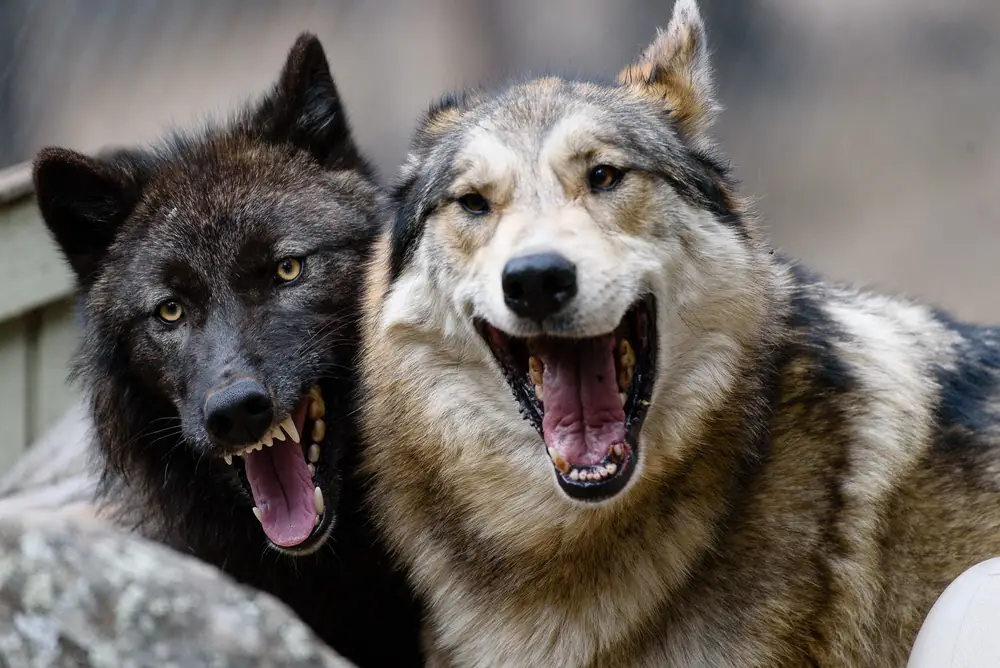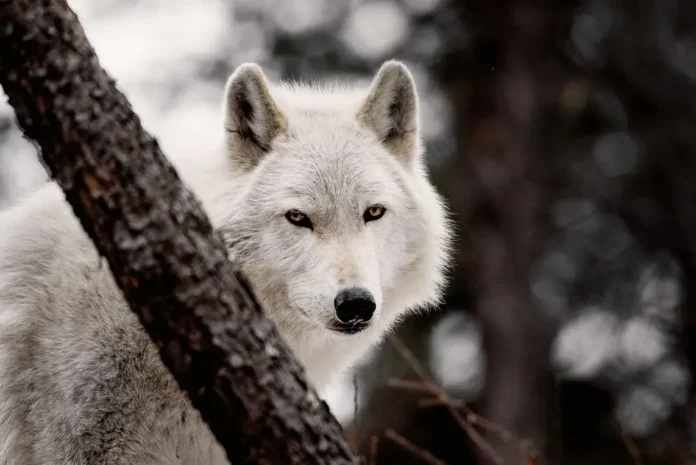My journey into photography began with a restless pull toward the wild. I wanted to stand in places where the air felt alive and unpredictable, where animals still ruled the landscape. Wolves and moose drew me in more than any others — powerful, untamed creatures that once roamed freely across Colorado before fear and profit nearly erased them. I’ve often thought about how our own history with these animals is tangled with mistakes: relentless hunting, trapping, and poisoning that pushed wolves to the brink. By the time I was born, they had been wiped out across most of the Lower 48, surviving only in a remote corner of northern Minnesota. In 1978, the government finally admitted the damage, listing the gray wolf (Canis lupus) as endangered almost everywhere — a quiet confession that we’d nearly lost one of nature’s most important predators.
The Switch Flips: Yellowstone and Beyond
The modern recovery of wolves in North America began with a bold experiment. In 1995 and 1996, biologists captured and relocated 31 gray wolves (Canis lupus) from Canada to Yellowstone National Park, holding them briefly in acclimation pens before setting them free. Fourteen wolves were released the first winter and seventeen the next. It wasn’t just the return of an absent animal — it was the return of a missing force of nature: predation, restored on a landscape grand enough for the entire nation to witness.
From that seed, recovery spread. The Northern Rockies linked Yellowstone packs into a larger metapopulation across Idaho, Montana, and Wyoming. The Great Lakes region — Wisconsin and Michigan, anchored by Minnesota — built on an existing remnant. In the desert Southwest, the Mexican gray wolf, or lobo, climbed back from the edge through painstaking captive breeding and releases. By the winter of 2024, that population reached nearly 300 wolves across Arizona and New Mexico, marking a ninth straight year of growth. It’s the best run the program has seen, powered by collaring, cross-fostering pups, and relentless fieldwork.

Colorado wrote a new chapter at the ballot box. In 2020, voters narrowly passed Proposition 114 directing the state to reintroduce wolves west of the Continental Divide and to pay fair compensation for verified livestock losses. Releases began in December 2023 under a federal “experimental, nonessential” designation — crucial because it gives managers flexible tools to haze or, if necessary, remove chronic depredators. In plain English: bring wolves back, but keep a wrench handy when conflicts flare.
What Changes When Wolves Return
Strip away the sentiment. Wolves matter because they move other pieces on the board. Elk don’t lounge in willow bottoms as long when there’s a risk of being run; that behavioral shift can give young aspens and willows a shot at escaping the browse zone. Beavers then find materials and water dynamics they like; their ponds spread water for birds, amphibians, and invertebrates. Carcasses from winter-kill and wolf kills feed ravens, eagles, foxes, and bears. This isn’t mythology — it’s measurable, though not uniform. Some valleys rebound faster than others, but the direction is consistent: predators bring complexity back.
Top predators also reshape the “middle” of the food web. Where wolves are present, coyotes often back off in number or in boldness, which can boost fawn survival for species like pronghorn and take pressure off small game. Disease dynamics in prey herds can improve when crowding eases. The effect isn’t the same everywhere — no ecosystem ever is — but it trends toward a healthier, more layered food web.
There’s also a genetics lesson that’s hard to ignore. On Isle Royale, an isolated wolf population slid into extreme inbreeding and near-collapse until managers ferried in new wolves. The takeaway is blunt: headcount isn’t the same as health. Connectivity — animals, genes, movement — makes the difference between a population that survives and one that thrives.


The Pushback: Real Costs, Real Fears
Here’s where conversation gets heated — and where honesty matters. Wolves do kill cattle and sheep. For a small operation, a dead calf isn’t a statistic; it’s a month’s margin. Ranchers who live on thin lines and long nights deserve straight answers, not lectures.
At the broad, national scale, verified numbers show wolves account for a small fraction of overall livestock losses compared with disease, weather, birthing complications, and other causes. That context matters in policy debates. On the ground, though, a specific pack in a specific valley during calving season can do outsized damage — fast. That’s why good management focuses on the hot spots, not the averages.
Non-lethal deterrents aren’t silver bullets, but they aren’t fluff either. Flagged fencing (fladry and turbo-fladry), range riders, night penning, removing dead stock before it draws predators, Foxlights, guardian dogs, and tighter calving windows all stack the odds in a producer’s favor. They work best when deployed before a pattern of depredation takes hold, with quick follow-up when wolves test the lines. The practical lesson is to build a toolkit, not a single fix.
Compensation programs — like Colorado’s — recognize that coexistence can’t be funded solely out of a ranch family’s pocket. Paying quickly for verified losses doesn’t make anyone whole for the stress or the extra time in the saddle, but it closes the financial loop and helps keep tempers cooler when the next conflict cycle rolls around.
Law, Labels, and Whiplash
Wolf policy swings — no use pretending otherwise. Federal listings and delistings rise and fall with new data, court decisions, and sometimes politics. A 2019–2020 push to delist much of the Lower-48 population led to lawsuits, and management authority has bounced between states and the federal government in different regions ever since. That’s maddening for field biologists who need steady rules and for communities trying to plan around them. The practical takeaway is to build management plans that can flex — plans that emphasize fast conflict response, clear thresholds for when a wolf is removed, and investments in prevention that keep everyone out of the red zone.

What Recovery Looks Like Up Close
Recovery is mostly unglamorous. It’s telemetry pings at 2 a.m., wet maps on a pickup hood, snowmobiles that won’t start, and a saddle you climb onto again after it throws you. Then it’s a notch on a willow stem showing a browse line that used to be waist-high and isn’t anymore. It’s a pack’s howl rolling through a timbered ridge where nobody under 60 remembers hearing it.
Yellowstone’s long record shows a system learning to breathe again: elk moving differently, woody plants catching windows to grow, scavengers tracking kill sites, and human tolerance rising and falling with the news cycle. It also shows the limits — sections of country where bison pressure or habitat constraints blunt the vegetative rebound. The system improves, not uniformly, and that’s still a win.
Colorado is the modern laboratory. The terrain is mixed-use all the way down: working ranches, big game herds, ski towns, subdivisions, and backcountry with more human tracks than a century ago. Success here will come from refusing absolutes: invest in non-lethals, compensate fast and fairly, and — when a wolf gets reliably tied to repeated depredations — remove it surgically. That’s the social license for keeping wolves on a human landscape.
For the Mexican wolf, success looks different: genetics, genetics, genetics. Managers will keep cross-fostering pups into wild dens, tracking survival, and pairing wolves to spread rare genes. Illegal killings and funding shortfalls remain the two threats that can undo a year’s gains in a night. Yet the steady growth of that small desert population proves what persistence can buy.
Why Wolves Are Worth the Trouble
Every ecosystem has its stress points. On western ranges, riparian zones are one of them — thin green veins that carry outsized biodiversity. When predators vanish and browsing pressure rises, those veins shrink and fray: fewer willows and aspens, fewer beaver ponds, less water storage, less resilience in drought. Predators don’t solve water management, but they shift behavior enough to open recovery windows. When those windows line up with good water years and smart management, you see the difference not only in plant stems but in birdsong, insect density, and how long a creek holds cold flow into August.
There’s also a cultural reason that doesn’t get said often: landscapes feel truer when the full cast shows up. That feeling isn’t a management metric, but it affects whether communities support the hard work of coexistence. Hunters who grew up with elk tags might not cheer a predator that stiffens the odds, but many admit the woods feel different — more alert, more alive — when something can hunt you back, even if only in your imagination. Photographers know it when a valley goes quiet for no obvious reason and then a gray shape slips from the timber.

The Playbook That Works
Prevention first. Put range riders on the ground early in calving season. Pull and dispose of carcasses so they don’t act like dinner bells. Use fladry and turbo-fladry to plug short-term gaps. Run Foxlights in pinch points. Pen animals at night when practical. Not all tools fit all operations; pick what you’ll actually use, not what looks good on paper.
Verify fast. When something dies, producers and agencies need to be on-site quickly to document evidence and determine cause. Fast verification leads to faster payouts and faster management decisions — both of which reduce the impulse to take matters into one’s own hands.
Be surgical. When a wolf or a pack develops a pattern of hitting livestock despite non-lethal pressure, remove the problem animals. That’s the flexibility built into modern recovery rules: protect livelihoods while keeping the larger comeback intact.
Keep corridors open. Recovery without connectivity is just a slow-motion bottleneck. Wolves need to move — and mix — across state lines and management zones. That’s how you avoid genetic dead ends.
Tell the truth. Wolves aren’t the main driver of livestock loss overall, but they can be a serious local problem; both statements are true. Acknowledging both creates the space for solutions.
The Bottom Line
We drove wolves to the brink, then discovered we were missing a gear our ecosystems relied on. Reintroductions — especially Yellowstone’s — showed how quickly that gear can re-engage and how unevenly the teeth catch from valley to valley. The Southwest’s lobo comeback proves you can climb out of a genetic hole with discipline and time. Colorado’s ballot-box reintroduction is the stress test for running predators on a busy, modern landscape where cows, elk, subdivisions, and ski traffic all share the same drainages.
A working West doesn’t have to be a wolf-free West. It has to be a managed West: prevention funded and deployed early, compensation paid fairly and fast, chronic problem animals removed without drama, and the science allowed to inform — not dictate — policy. Do that, and you keep the land closer to what it is supposed to be: resilient, layered, and alive, from willow stem to eagle, from coyote to wolf.
References and research
- National Park Service – Wolves in Yellowstone
- U.S. Fish & Wildlife Service – Gray Wolf (Canis lupus)
- U.S. Fish & Wildlife Service – Mexican Wolf Recovery Program
- Colorado Parks and Wildlife – Wolf Restoration and Management
- National Wildlife Federation – Gray Wolf Facts
- Scientific American – How Wolves Change Ecosystems
- Nature Scientific Reports – Aspen and Willow Recovery in Yellowstone
- National Park Service – Isle Royale Wolf-Moose Project
- World Wildlife Fund – Arctic Wolf
- National Geographic – Arctic Wolf Profile
- USDA Forest Service – Wolves and Livestock Coexistence Tools
- Center for Biological Diversity – Gray Wolf Campaign
- Pew Stateline – Colorado Wolf Reintroduction Debate





